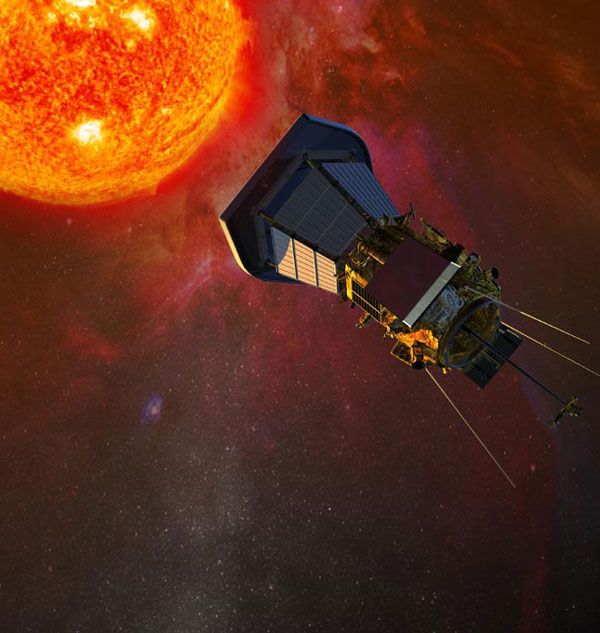
NASA / Johns Hopkins APL / Ed Whitman
Parker Solar Probe Completes Launch Simulation Vibration Testing (News Release)
To ensure that NASA's Parker Solar Probe will be able to withstand the physical stresses of launch, engineers at the Johns Hopkins Applied Physics Laboratory – where the probe was designed and is being integrated and tested – used a special device called a shaker table to simulate the forces of being hurled into space. The spacecraft successfully passed vibration testing, or "vibe," as the engineers call it, in late October.
"Our vibration testing uses our 40,000-pound force shaker to simulate many of the dynamic events that occur during launch and powered flight," said APL's Dave Persons, Parker Solar Probe lead structural engineer. "By safely simulating that process here in the clean room, we're able to fully monitor the spacecraft and make sure it's cleared for flight. During the test, we actively monitored over 300 channels of data."
During and after launch aboard a Delta IV Heavy—the world's largest launch vehicle—from Cape Canaveral Air Force Station, Florida, in summer 2018, Parker Solar Probe will undergo immense shaking and vibration. These Earth-bound tests are designed to make sure all of the systems and instruments on the spacecraft are up to those stresses.
"The predicted responses for major loading events – derived from studying and analyzing how payloads like spacecraft that are attached to the launch vehicle behave – establishes just how much force and vibration that Parker Solar Probe will be subjected to," said Shelly Conkey of APL, Parker Solar Probe structural analyst. "We load that information into our simulation, and the shaker table subjects the probe to that force and vibration. This testing lets us know that the probe is adequately designed to survive launch, and is ready to move on to further environmental testing, which we'll continue at NASA's Goddard Space Flight Center."
The Parker Solar Probe spacecraft will explore the Sun's outer atmosphere and make critical observations that will answer decades-old questions about the physics of stars. The resulting data will also improve forecasts of major eruptions on the Sun and subsequent space weather events that impact life on Earth, as well as satellites and astronauts in space. The mission is named for Eugene N. Parker, whose profound insights into solar physics and processes have guided the discipline.
Source: Parker Solar Probe Website
****

JHU / APL

No comments:
Post a Comment